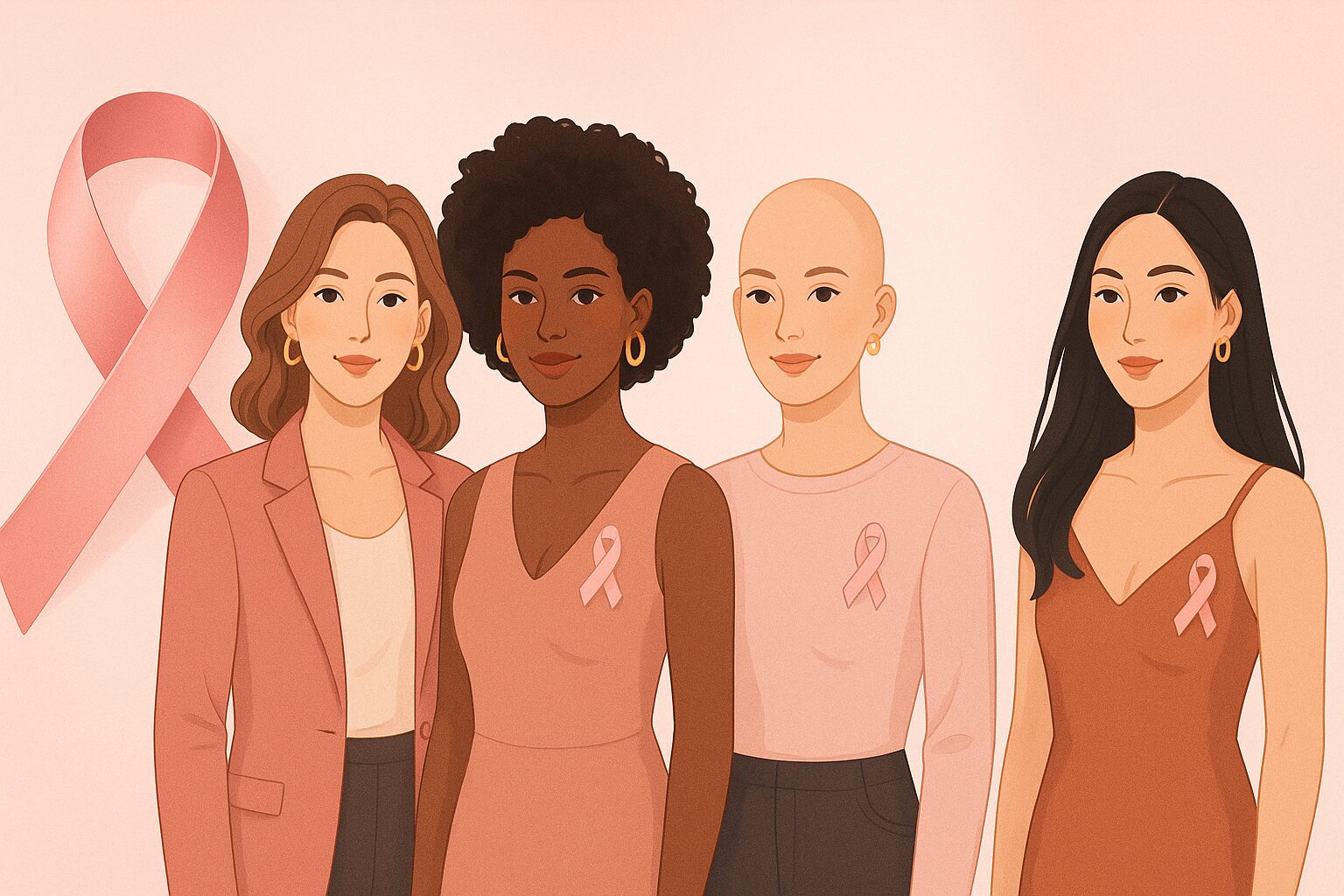On August 19, 2025, a small change arrived in an ultrasound bay at Keio University’s Center for Preventive Medicine. A system called Smaopi, built by Smart Opinion with Keio clinicians, moved from trial to routine use. The screen looked familiar at first. Then a calm geometry appeared. Green around what seemed harmless. Red where a closer look might be wise. It was not a flourish so much as a habit forming in real time, the machine taking a chair beside the physician and offering a second glance.
Breast cancer screening has long relied on the trained eye and the muscle memory that comes with it. Smaopi reads the same ultrasound and marks regions that deserve attention. In studies reported by the team, the system identified abnormalities with accuracy in the mid-ninety percent range. It has also shown value in dense breast tissue, where tumors are more easily hidden. None of this replaces judgment. It steadies it. The machine never tires of the same angle. The physician decides.
Toward Gentler Screening
Many people hear the word mammography and remember the pinch, the pressure, the pause of breath. Ultrasound is not the same kind of ordeal. It is quieter on the body. If software can share the first pass, if it can shorten the time from image to counsel and make the visit feel less forbidding, more patients may say yes to being seen. There are limits. Inflammatory disease, lesions near the nipple, very large masses still challenge an algorithm. The promise lives in the pairing of a cool reading and an experienced hand.
Beyond a Single Disease
Smaopi is part of a broader shift. In Yokohama, clinics have used software to review chest X-rays and catch pneumothorax that a hurried day might miss. Across Asia, mobile programs are wiring up screening to reach people where they are. The work depends on a kind of national temperament. Japan’s hospitals keep careful archives. Images are labeled well, protocols are consistent, records are tended. Artificial intelligence learns best from order. That order has become an asset.
LPIXEL, a University of Tokyo–born AI Startup, and the Future of Image Analysis
From the upper floors of an office tower in Otemachi, LPIXEL looks out over Tokyo and past it. The firm grew out of the University of Tokyo in 2014 and has specialized in image analysis for medicine and the life sciences. One founder’s early fixation on pictures and biology became a house style. The present leadership keeps the ambition quiet and practical. The aim is less to astonish than to endure.
EIRL in Practice
LPIXEL’s tools travel under the name EIRL. They scan brain MRI, chest radiographs, endoscopy frames, and lift the faint signals that suggest trouble. In 2019, EIRL aneurysm won approval in Japan and entered the market as a domestic software device that learns from data. The next year, chest modules for pulmonary nodules moved forward. Some of these tools now sit inside the daily routine of radiology. A different success follows from that routine. A doctor finishes on time. A call is clearer. A patient leaves with a plan.
Measuring What Fatigue Hides
A quieter utility hints at how the suite thinks. EIRL Chest Metry calculates what many readers have long estimated by eye, including the cardiothoracic ratio and the width of the aortic arch. The output is a set of numbers that do not drift. The numbers prepare the ground for the real work of interpretation.
Taking the Lab to the Street
Mobile screening vans in Bangkok circle nineteen districts with X-ray units on board. Software triages images while the patient is still nearby. If a film looks worrisome, a radiologist is alerted and follow-up can begin before the van turns the corner. Tuberculosis control is as much logistics as medicine, and minutes matter. Yet portability is hard. Field images are messy, machines vary by age and upkeep, and operators work quickly. Models trained on pristine hospital studies can stumble on the street. To make its systems tolerant, LPIXEL has folded in data from different devices and countries, including tuberculosis cases from Thailand. The work is patient, unglamorous, and necessary. You teach the lab to ride the bus before you send it out.
Building the Useful Ecosystem
Usefulness lives in the room. Software must drop into a PACS without fuss, speak cleanly to electronic records, and be simple enough for a municipal nurse who never touched the design. EIRL routinizes what can be measured so attention lands where it should. Smaopi offers a second pair of eyes without overruling the first. Beyond the clinic, LPIXEL works on the bench and factory floor under the IMACEL name, counting cells, grading cultures, and tightening the loop from experiment to result. A partner program helps turn bespoke algorithms into products. The philosophy is steady across settings: find the repetitive task that steals attention, make it exact, and give the saved attention back to the person.
The Quiet Architecture of Care
This story climbs a staircase without trumpets. Incorporation in 2014. Market clearance in 2019 for aneurysm detection. Chest work broadened the next year. New public and private backing. Leadership refreshed. Screening buses tested and refined. Picture a near-future reading room. A physician scrolls in silence while a side panel keeps pace and marks places to linger. Relevant priors arrive without a hunt. Measurements fill in the same way every time. A flagged case is already on a colleague’s list, and a scheduler slides a follow-up into the afternoon. None of it looks like triumph. All of it looks like care. The point remains modest and durable. AI does not replace a doctor. It reduces misses, invites more people to be screened, and knits diagnosis into something smoother and more human. Where clinical intuition and machine patience meet, a new landscape appears, steady rather than loud, two pairs of eyes on the same screen.
Company Information:
- Name: LPIXEL Inc.
- Founded: March 4, 2014
- Headquarters: Otemachi Building, 6F, 1-6-1 Otemachi, Chiyoda-ku, Tokyo
- Representative Director (CEO): Tomihisa Kamada
- Core Products: “EIRL” medical-imaging AI; “IMACEL” AI for research and manufacturing
- Milestones: Approval of EIRL aneurysm in 2019; TB screening pilot in Thailand in 2025.
- Web Site: https://lpixel.net/
Hope Valley AI, a young team in France, is building software to catch breast cancer risk early. In Japan, Smaopi reads ultrasound images beside the clinician, a quiet partner at the console. Neither promises a miracle, which is the point. They offer something steadier and more humane, a way to look without pain, to examine without radiation, to add a second glance where the first might slip.
Mammography saves lives, yet for many it has always felt like a tollbooth. You pinch, you press, you hold your breath. The method works, and still it can keep people away, especially if you have dense tissue or if the word exposure makes your shoulders rise. Ultrasound rearranges the scene. A little gel, a probe, a screen. Now imagine that image with a quiet companion, an algorithm that notices what fatigue forgets and draws a soft box around a shadow that needs a name. It helps the reading, which is measurable. It also does something that refuses to fit in a table, which is to be kind to the body. We say this about women because we should, and we should remember men as well.
The numbers are blunt. Find breast cancer at stage zero or stage one and the five-year survival rate rises well above ninety percent. Early is better. Early is almost everything. Yet people still die because the path to screening climbs too much. There may be no clinic nearby. Fees may lean toward the rent. A manager may not spare an hour. Inequity slips under medicine’s door like a draft you feel even when the room is warm.
This is why the stories about mobile screening coaches matter. In Bangkok, buses fitted with X-ray units circle the city. Software triages images while the patient is still there. A radiologist in the cloud gets a ping, and someone who might have waited months leaves with a next step before the bus pulls away. It is not sleek and it does not try to be. It is health care with good tires, which is to say health care that moves.
Say the words artificial intelligence in medicine and the arguments arrive. Who owns the miss. Where do the data go. The questions are fair and they should be asked. In the clinics I know, no one wants software to play doctor. We want it to carry the weight that machines carry well, the counting and measuring and sorting that puts the urgent study on top at four in the afternoon as reliably as at nine in the morning. Let clinicians do the human work, listen, explain, decide.
Everywhere there are not enough hands. Small practices tread water. The gear they need costs like a year of salaries. If software takes the repeat jobs, if a simple robot or an exosuit saves a nurse’s back, if the first pass in triage happens before the waiting room spills into the hall, more people get seen. Fewer give up. You can feel the temperature of a clinic fall when the machines take what they are good at and then get out of the way.
Medicine does not truly move fast, and neither do the tools that now gather around it. Progress prefers short steps. I do not picture a chrome palace. I picture a modest clinic on a shopping street, a van idling at the curb, a small server humming in a closet. A nurse, a doctor, a tech. A system that does not ask for applause. It helps. One ordinary morning this will be the norm, and we will wonder why it took so long.


